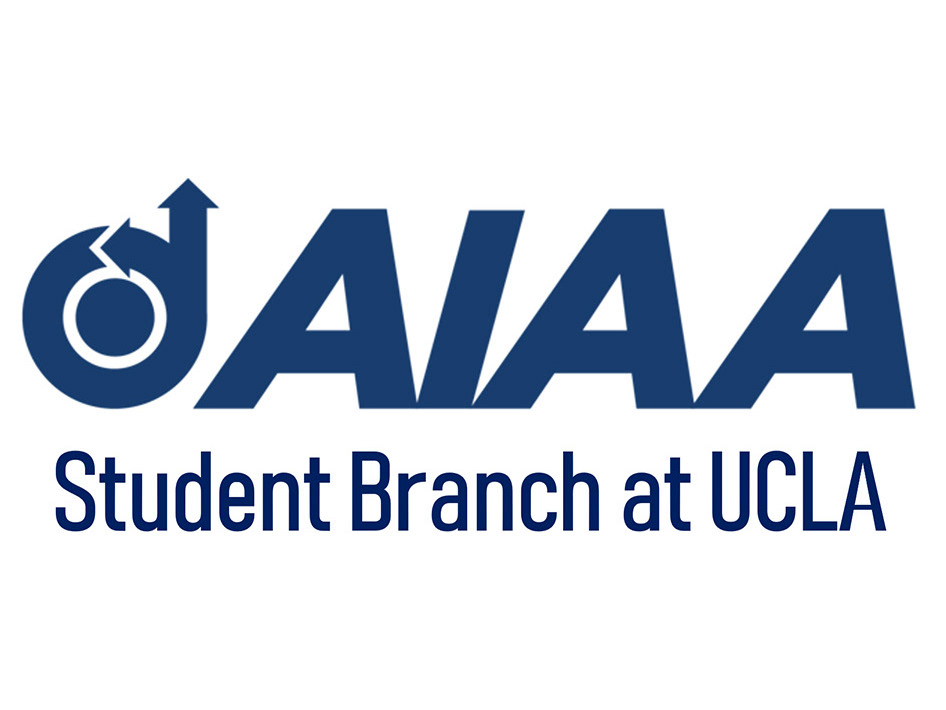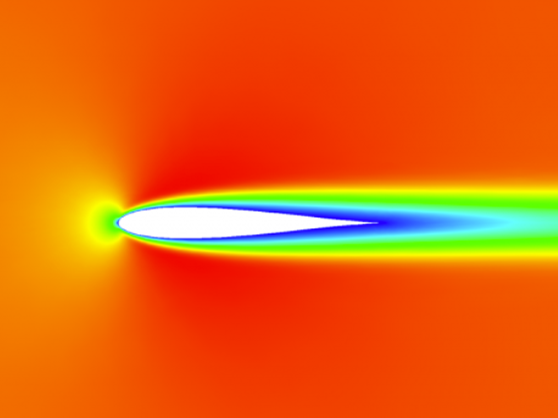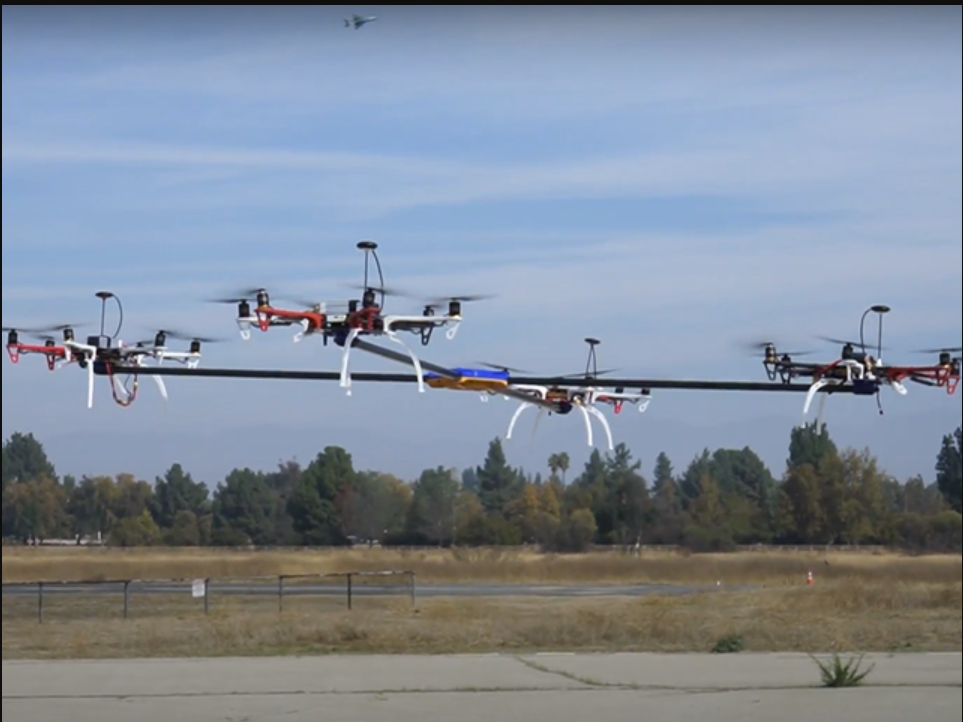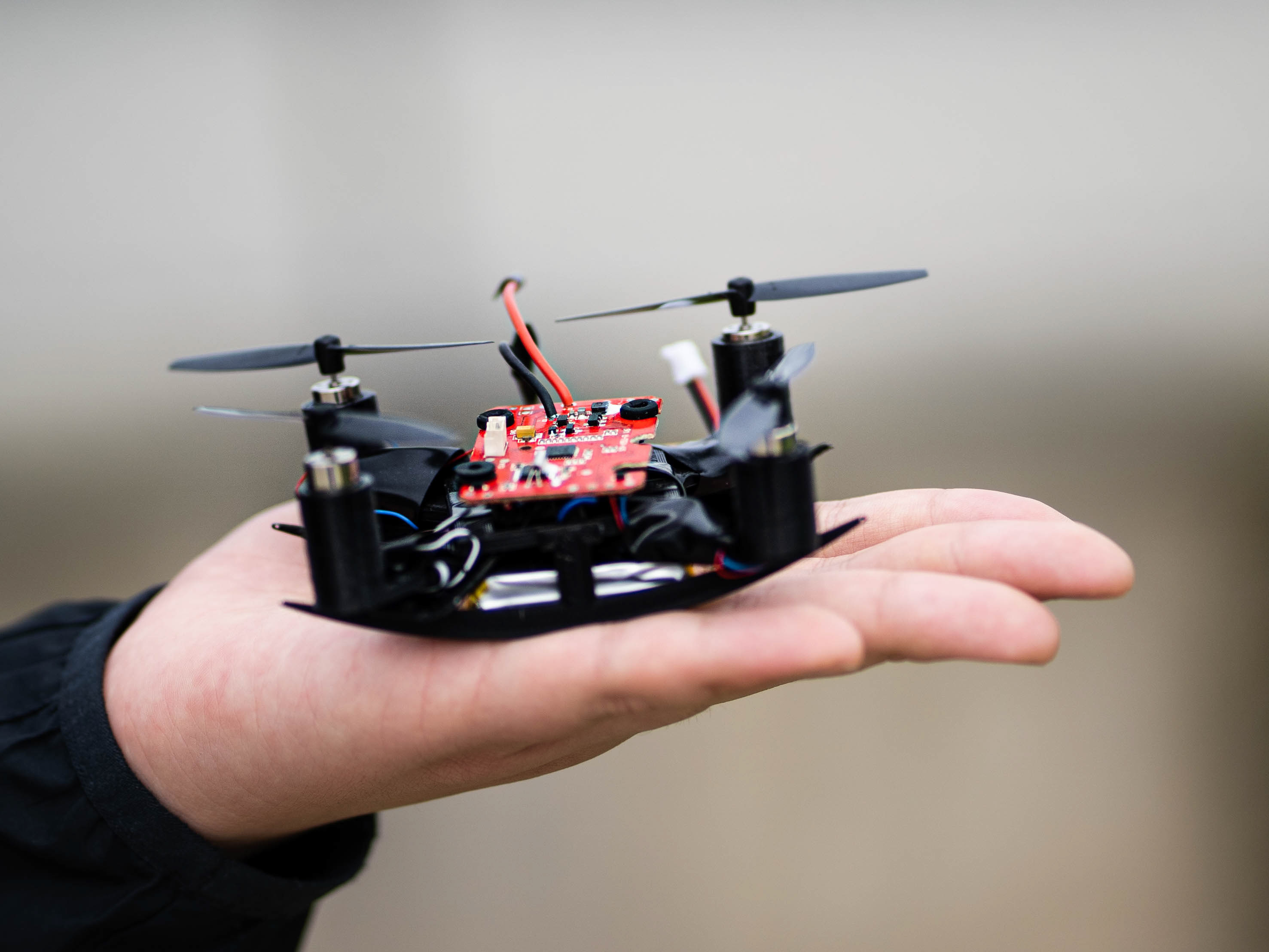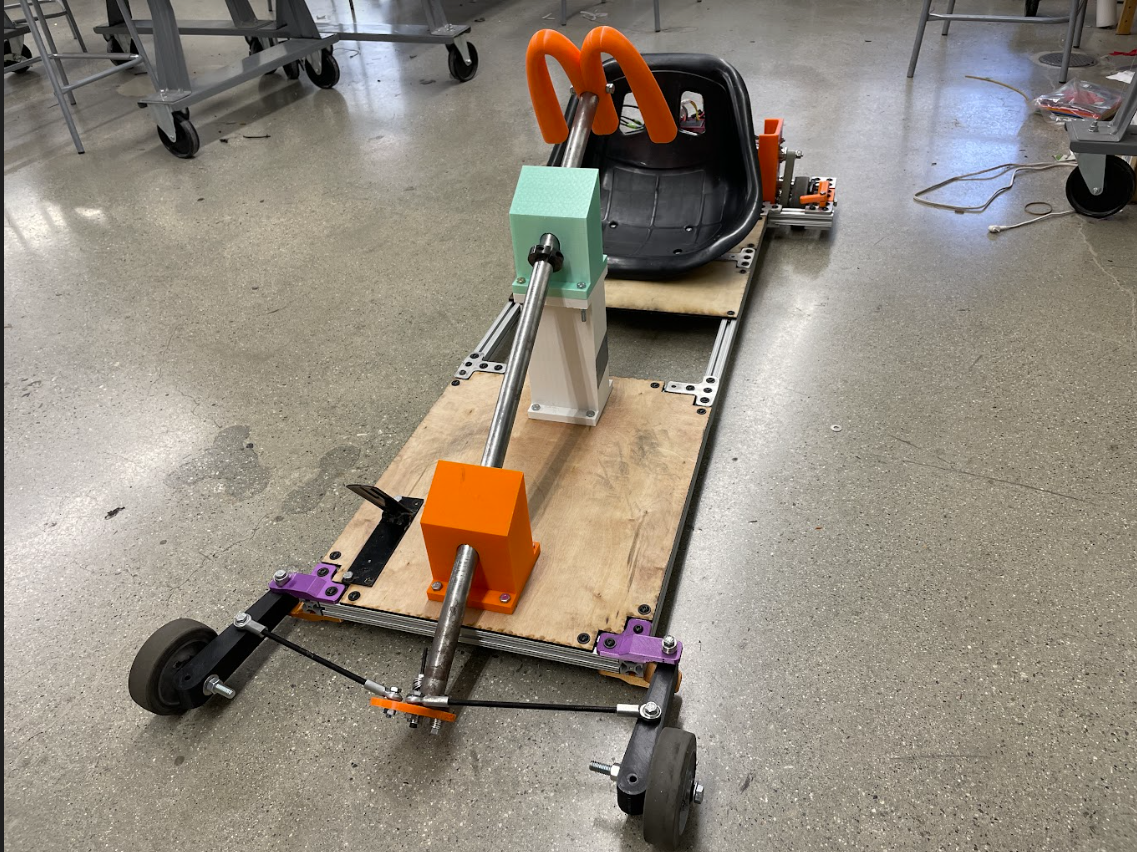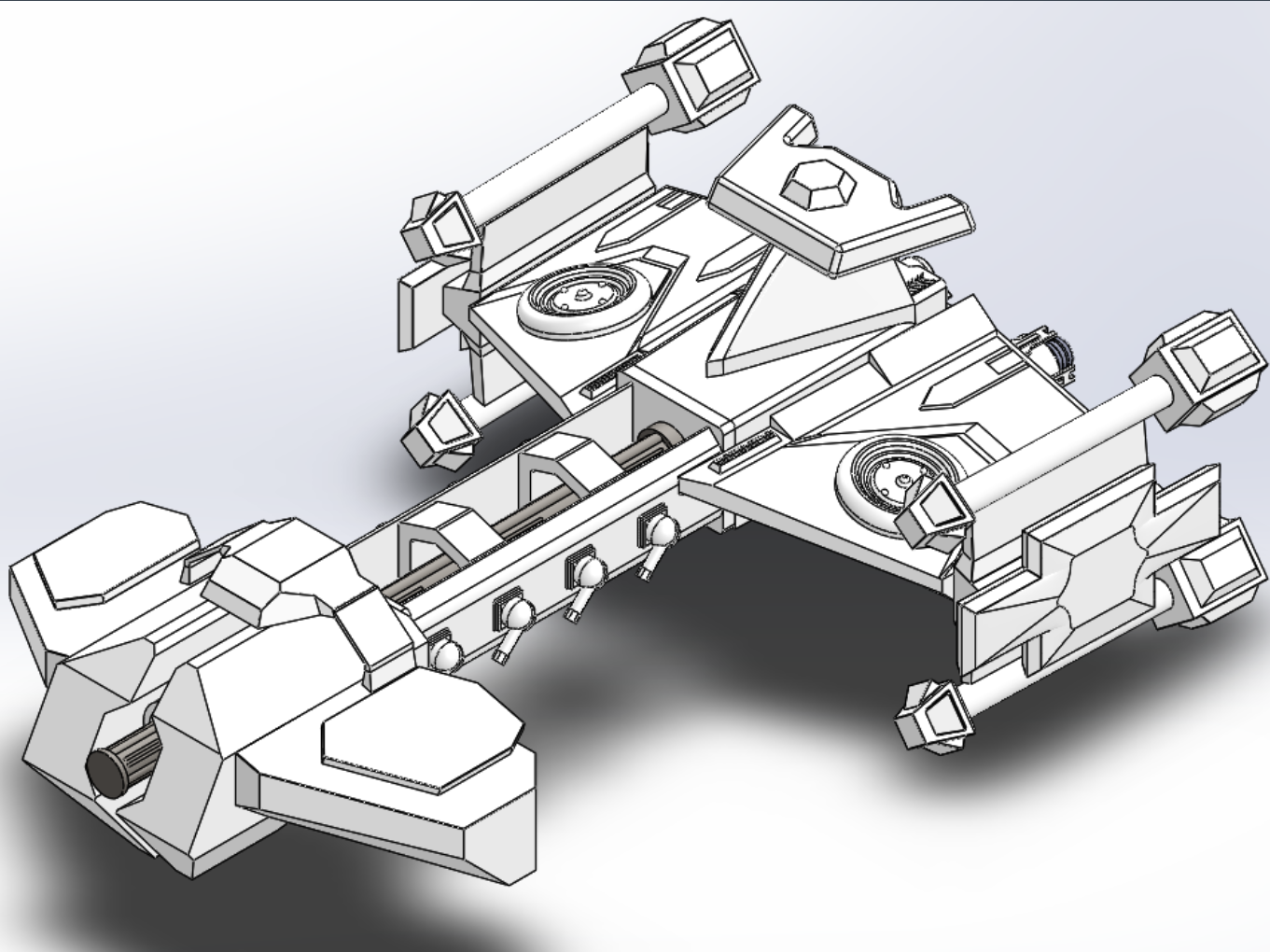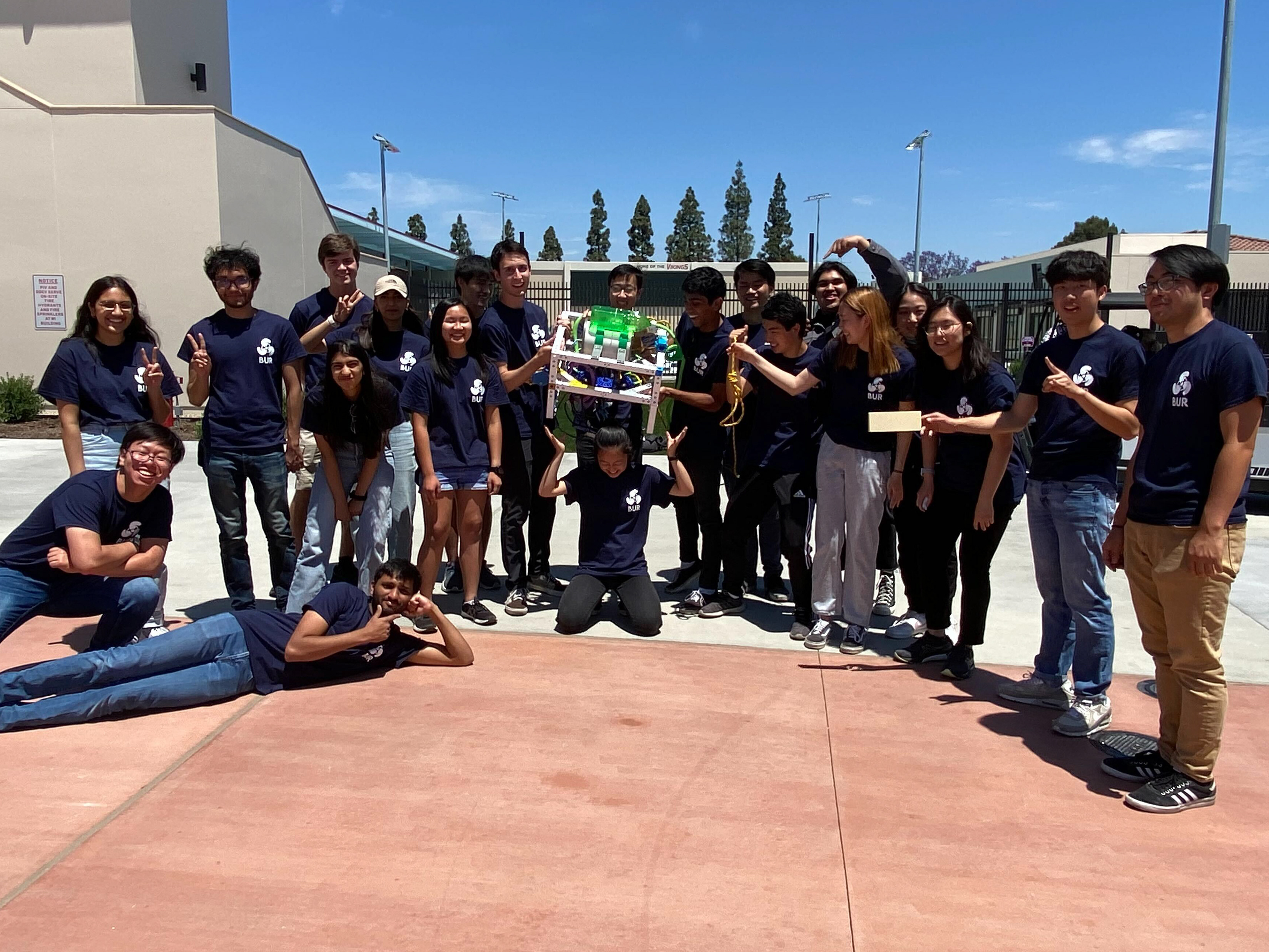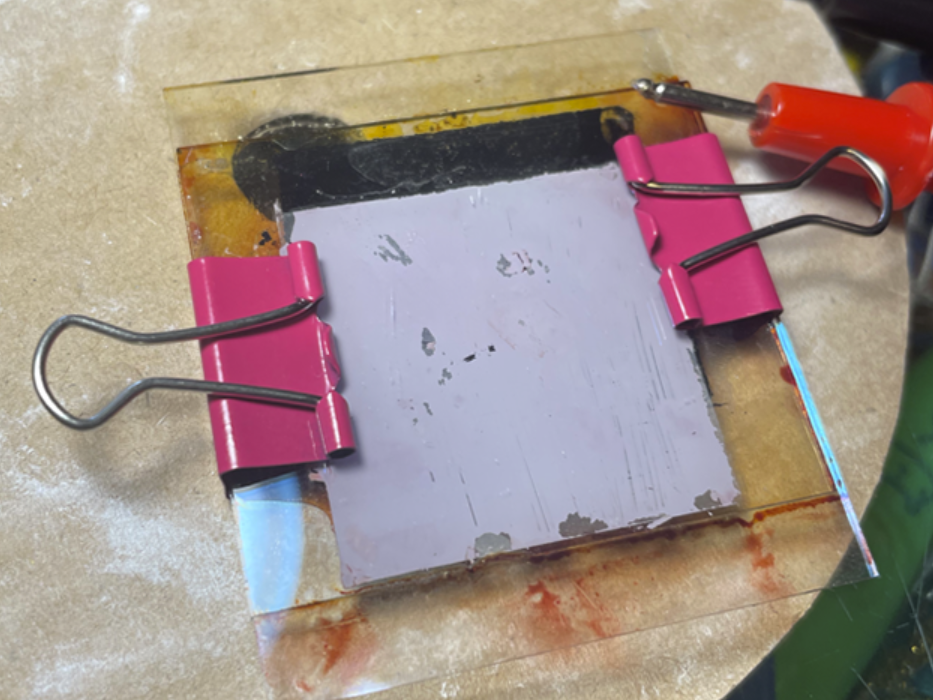Boeing EWING
February 2021 ~ 4 Person Team
Overview
The Boeing Company's Engineering Workshop of Industry, Networking, and Guidance (EWING) invited undergraduate engineering students to work with a team and to complete a real-life engineering design challenge on a Boeing airplane interior.
I worked with a team of 3 other undergraduate engineers from different schools to design an aircraft interior of a Boeing 737 Max-7 for a specific customer, following customer needs, aircraft manufacturing limitations, and all safety requirements from FAA and other regulatory agencies
Objectives
- The number of available seats must equal or exceed the number of expected passengers.
- Doors must have a 36" x 36" unobstructed area.
- All walkways must be at least 24" wide.
- Average floor loading must be less than 15 lb/ft^2.
- Center-of-gravity must be balanced.
- Power consumption cannot exceed 5kW.
- Fuel consumption cannot exceed 840 gallons per hour.
- Total budget of $10 million.
- Customer profile: upper-class family or groups of friends; party of 6 with interests in relaxing and multimedia entertainment.
Skills
Data Analysis: Google Sheets
Other skills: collaborative creativity, public presentation, teamwork across backgrounds
The Infinity Plane
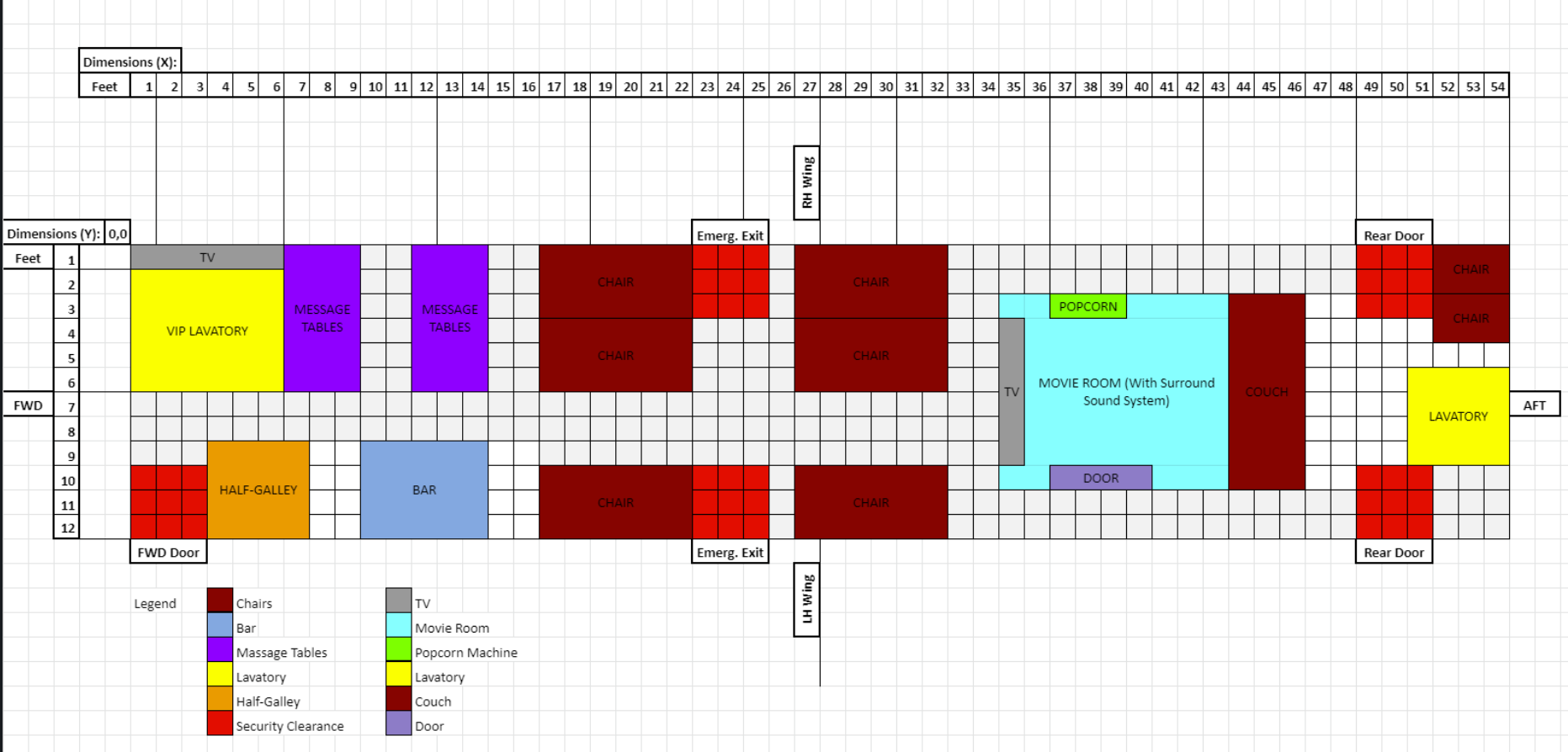
LOPA (Layup of Passenger Accommodation)
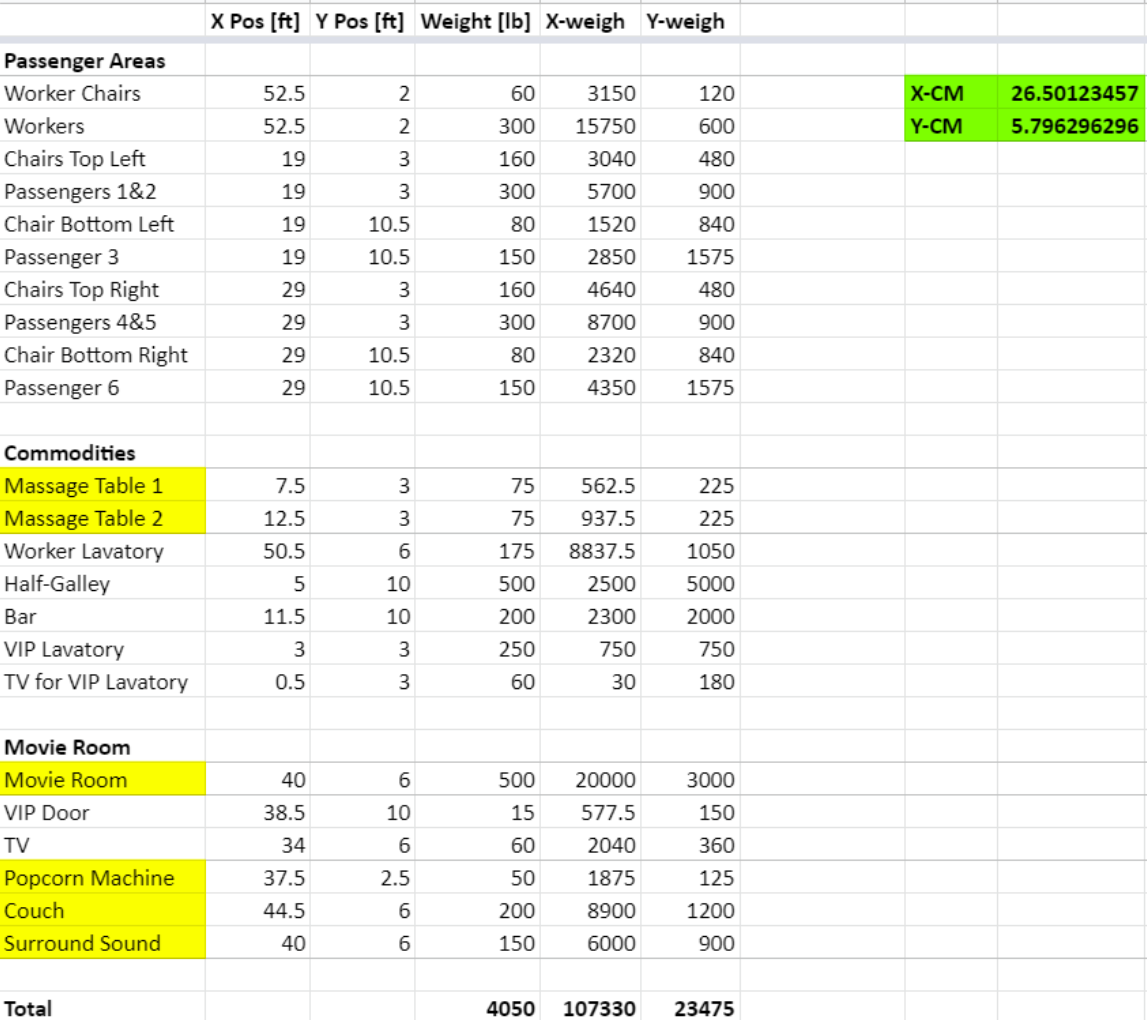
Center of Mass Calculations

Expected Center of Mass
Statistics
- Floor Loading = 6.25 lb/ft2 (sum of the weight of each item divided by total floor area)
- Center of Mass = 26.50 ft from the fuselage tip, 5.80 ft from the right side of the fuselage (sum of the weight of each item multiplied by their x or y location, divided by the total weight)
- Efficiency = 1 (well balanced center of gravity)
- Power Consumption = 2340 Watts (sum of all power draw items)
- Fuel Consumption = 800 gal/hr ((750 gal*efficiency)/(100%-(floor loading/15 lbs ft2)*15%)hr)
- Total Estimated Costs (for 10 years of operation) = $8,675,000
Outcomes
- 1st place peer nomination for best creativity, 1st place peer nomination for best presentation, and 1st place award by judges out of 5 teams.
- Learned to use Excel Sheets to simplify calculations and to ensure all the requirements are met.
- Learned to collaboratively navigated individual creative processes to design this final product.
- Experienced the complexity of meeting safety requirements: introduction of new equipment and furniture leads to corresponding safety needs.
- Discovered the design side of engineering outside of aerodynamics, structural analysis, or thermodynamics.
